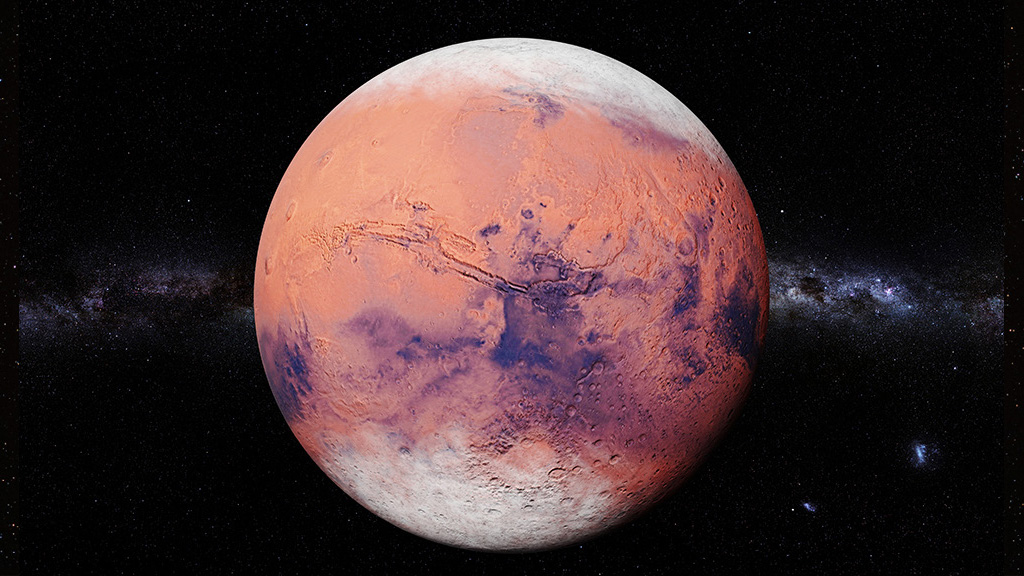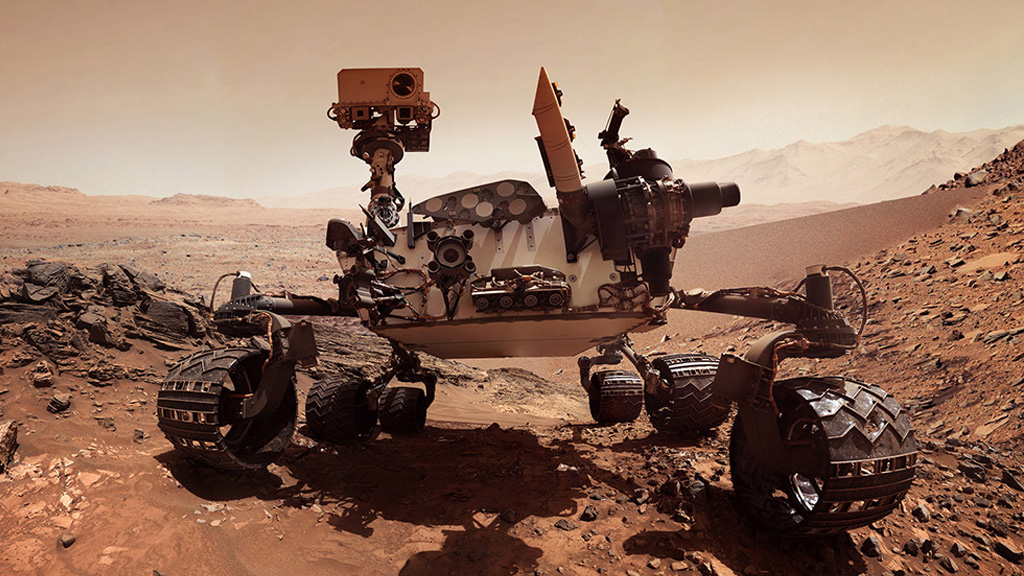Mars Exploration

There are ice caps on the north and south poles of Mars.
English | LEVEL A

There are ice caps on the north and south poles of Mars.
Mars is the fourth planet from the Sun and Earth’s neighbor. It’s called the "Red Planet" because its surface is covered in red dust. Mars has many interesting features like craters, canyons, and volcanoes. It also has ice caps on its north and south poles.
The air on Mars is mostly carbon dioxide. Carbon dioxide is a gas that is found in the air we breathe out, pollution from cars, and wood smoke. The temperature on Mars can get as cold as –225°F, which is freezing! Humans couldn’t survive on Mars without special equipment. They couldn’t breathe since there is no oxygen. They would also freeze.
A long time ago, people knew about Mars. They could observe its movement in the sky, but did not have any close-up pictures of Mars.
That changed in 1964. The first pictures of Mars were taken by NASA’s Mariner 4 spacecraft. The National Aeronautics and Space Administration (NASA) is a group of scientists in the United States who want to learn more about space. Since then, five robots called rovers have landed on Mars: Sojourner in 1997, Spirit and Opportunity in 2004, Curiosity in 2012, and Perseverance in 2021. These rovers can drive around and explore the surface of Mars.

The Curiosity rover
Rovers help scientists look at different parts of Mars up-close. For example, Curiosity found small round rocks that probably moved down a river. This means there might have been water on Mars a long time ago. Could there have been life, like tiny germs? Scientists are still working on this question.
New rovers like Perseverance have special tools to test rocks and air. Knowing more about Mars’s air will help NASA get ready to send people to Mars in the future.
Sending rovers to Mars is amazing, but it’s not easy. A lot of different scientists including engineers, physicists, geologists, and programmers need to work together.
First, scientists have to design the rover and plan how to make it. Then, they test it to make sure it works. If it doesn’t, they problem-solve together. It’s normal not to get everything right on the first try.
For a rover to land on Mars, scientists have to very carefully calculate its path. A tiny mistake could make it crash. Once the rover crashes, its mission is over. It cannot work anymore. So, scientists run a lot of tests to check their work before sending the rover to Mars.
Even though scientists have learned a lot about Mars, they still don’t know everything. One of the big questions is how to safely send astronauts to Mars.
Space exploration takes a lot of hard work and perseverance, but it can lead to amazing discoveries about the universe!